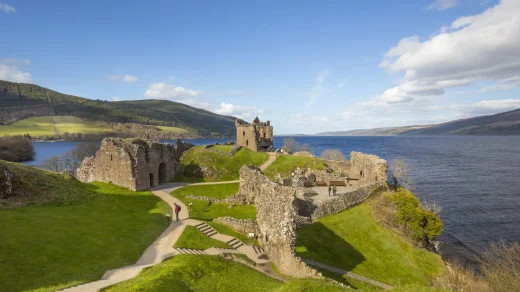The Sporran
Original sporrans dating from the fourteenth century and onwards can be viewed at many Scottish museums. The history and evolution of the sporran can also be traced through early British military paintings and portraits of Highland soldiers; these later sporrans start to show more elaborate decoration.
From the late seventeenth century and early eighteenth century sporrans were generally fitted with metal clasps, usually made from brass, or for clan chiefs, occasionally silver. The elaborate metal workings of some of these clasps are indeed miniature works of art. The goat-haired, sporran molach or hairy sporran was introduced by the military in the eighteenth century. These sporrans often had flap-tops and large tassels and featured a variety of furs and hair such as fox and horse, or occasionally sealskin, all set off with a badger’s head.

But what is it that a Scotsman actually keeps in his sporran? Well, one sporran on display at the National Museum in Edinburgh features a clasp of brass and steel with four concealed pistols inside, the contraption being designed to be discharged should anybody attempt to open the locked purse, thus either killing or maiming the thief.
The modern sporran, or sporan – Gaelic, has evolved a long way from the doeskin bag containing ammunition or daily rations and many now feature stainless steel and even plastics! Despite modern enhancements however, sporrans retain their basic design principles and carry everything from car keys to mobile phones.




I had always wondered about these. I thought they were simply decorative.
no not just for ornamental purposes x